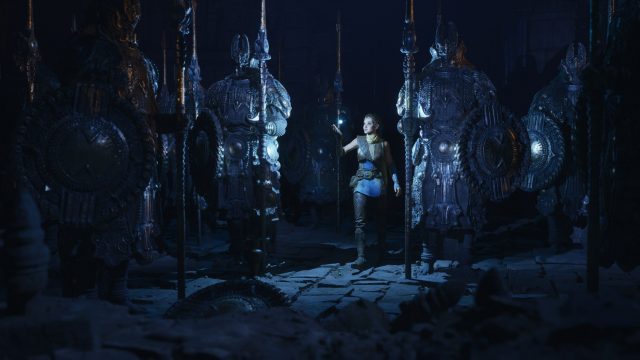Epic Games today revealed a PS5 tech demo built with Unreal Engine 5, the next-gen version of the company’s game engine. With new features for advanced lighting and unprecedented geometric detail, Unreal Engine 5 hopes to enable a generational leap in real-time graphics.
Unreal Engine is one of the two most popular game engines for creating VR content. While UE 4.25 just launched last week with improvements to its AR and VR support, Epic Games today showed off a tech demo built with new foundational capabilities of Unreal Engine 5 which the company plans to launch in 2021.
“One of our goals in this next generation is to achieve photorealism on par with movie CG and real life, and put it within practical reach of development teams of all sizes through highly productive tools and content libraries,” Epic says.
Running on PS5 developer hardware, the aptly-named tech demo ‘Lumen in the Land of Nanite’ shows off UE5’s Lumen global illumination system and Nanite micro-geometry system. Here’s how Epic describes the features:
Lumen is a fully dynamic global illumination solution that immediately reacts to scene and light changes. The system renders diffuse interreflection with infinite bounces and indirect specular reflections in huge, detailed environments, at scales ranging from kilometers to millimeters. Artists and designers can create more dynamic scenes using Lumen, for example, changing the sun angle for time of day, turning on a flashlight, or blowing a hole in the ceiling, and indirect lighting will adapt accordingly. Lumen erases the need to wait for lightmap bakes to finish and to author light map UVs—a huge time savings when an artist can move a light inside the Unreal Editor and lighting looks the same as when the game is run on console.
Nanite virtualized micropolygon geometry frees artists to create as much geometric detail as the eye can see. Nanite virtualized geometry means that film-quality source art comprising hundreds of millions or billions of polygons can be imported directly into Unreal Engine—anything from ZBrush sculpts to photogrammetry scans to CAD data—and it just works. Nanite geometry is streamed and scaled in real time so there are no more polygon count budgets, polygon memory budgets, or draw count budgets; there is no need to bake details to normal maps or manually author LODs; and there is no loss in quality.
In its UE5 tech demo reveal today, Epic didn’t mention PSVR 2 (which is expected to be announced after the launch of PS5), but the company did confirm that VR and AR content creation for console, PC, and standalone will continue to be supported in UE5.
While this demo is extremely impressive and significant for the future of real-time graphics, it will likely be a while yet before we see this level of graphical fidelity in VR games and content.

While Unreal Engine 5 will continue to support VR development, the demo shown today was running at 2560×1440 at 30 FPS, which is far too slow for high-end VR headsets, most of which require a minimum of 80 or 90 FPS, with some demanding even higher resolutions.
VR developers will likely be able to make use of Lumen, Nanite, and other advanced UE5 features, but perhaps not at the same scale seen in the ‘Lumen in the Land of Nanite’ tech demo—at least not until next-gen graphics hardware is much more prolific.

Outside of VR games, UE5 is likely to be especially useful for enterprise VR and AR use-cases involving visualization, which typically require that detailed computer models be reduced in complexity in order to run in real-time. With Nanite, Epic is promising that UE5 will be able to ingest huge models like photogrammetry scans and CAD data, then display them natively without needing to create decimated versions with reduced geometric accuracy.
– – — – –
Epic says that Unreal Engine 5 will be available in a preview version in early 2021 and launch in full later that year. The engine will support next-gen consoles and all existing platforms including tethered and standalone AR and VR headsets.
The company also says that UE5 is being designed with forward-compatibility in mind, so developers working with UE4 now can expect to migrate their projects to UE5 when the time comes. To lead by example (and sort out the kinks along the way), Epic plans to launch its battle royale hit Fortnite on next-gen consoles in its current UE4 version, and then move the game over to UE5 in mid-2021.






